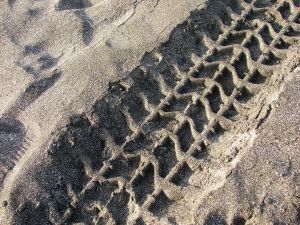- Free Initial Consultation: (954) 761-3641 Tap Here To Call Us
Major v. City of Hartville – Constructive Notice in Premises Liability Lawsuit
In order to sue a business or municipality for failing to address a trip-and-fall hazard, a plaintiff must first show defendant knew or should have known about the danger. If there is proof the defendant knew, that’s called “actual knowledge.” When the evidence shows instead the defendant should have known about it, this is called “constructive knowledge.”

The latter can be established with circumstantial evidence, showing for example the condition was recurring or that it would have been discovered had defendant exercised reasonable care. If a plaintiff can’t prove some form of knowledge of the danger by the defendant, he or she will have no case. It’s a critical element of any premises liability lawsuit, and an experienced attorney can help determine whether there is a strong basis to prove it in your case.
It was central to the recent claim of Major v. City of Hartville, weighed by the South Carolina Supreme Court. more As our Fort Lauderdale injury lawyers understand, the original claim stemmed from a plaintiff sustaining an ankle injury as she walked across an unpaved area of the intersection. That intersection was owned and maintained by the city/defendant.
When plaintiff filed her lawsuit, she alleged her injury was the proximate result of a rut in the ground, created by cars and trucks routinely driving over the unpaved area. Plaintiff alleged negligence, gross negligence and willful and wanton conduct.
Before trial began, the city filed a motion for summary judgment, arguing it couldn’t be held liable under the state’s Torts Claims Act because it wasn’t given any notice of a rut at the location where the plaintiff was hurt.
Plaintiff countered this assertion by presenting testimony indicating the city knew drivers routinely cut the corner of that intersection, resulting in ruts on the unpaved area along the roadside. In the past, the city had responded by filling in the deep holes with clay or sand. However, the city stopped doing this because, as one employee testified, it was a “fruitless effort.” No matter how many times the city filled in the hole, it would revert back to the same condition within days.
Still, the trial judge granted summary judgment in favor of defendant, ruling defendant’s knowledge of cars cutting the corner didn’t create a “continual condition” that would result in the city being on constructive notice of this particular rut in the walkway. An appellate court affirmed, finding the city’s knowledge that such action might eventually lead to a rut did not constitute constructive knowledge. However, the state supreme court reversed.
In its reasoning, the court found testimony presented by plaintiff indicates a genuine issue of material fact exists as to whether the city had constructive notice. Ultimately, that means the case needs to go before a jury, rather than be decided in a summary judgment by a judge.
Call Fort Lauderdale Injury Attorney Richard Ansara at (954) 761-4011. Serving Broward, Miami-Dade and Palm Beach counties.
Additional Resources: Major v. City of Hartville, Sept. 17, 2014, South Carolina Supreme Court More Blog Entries: 3rd DCA Denies Vicarious Liability for Those Aiding in Defense, July 24, 2014, Fort Lauderdale Trip-and-Fall Lawyer Blog













